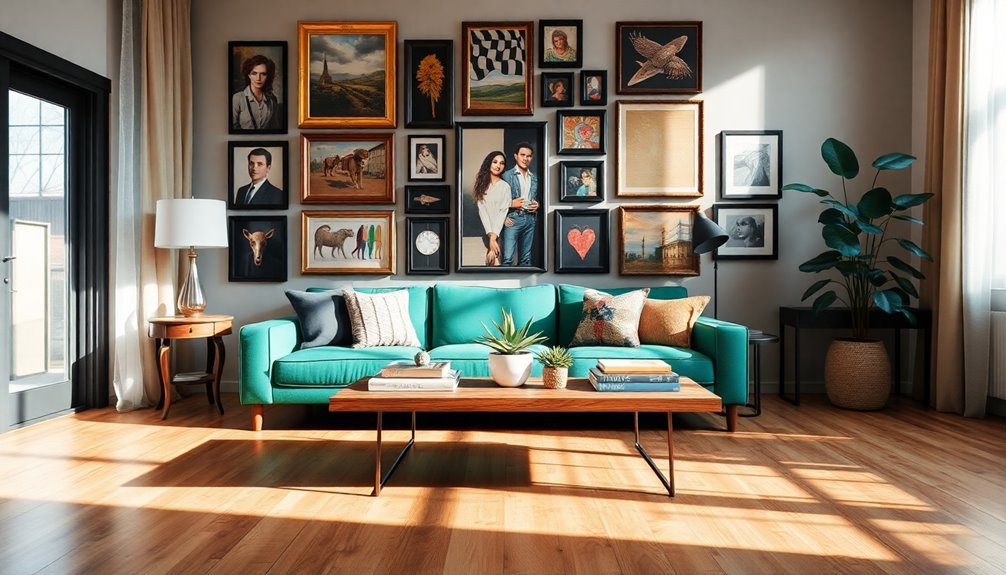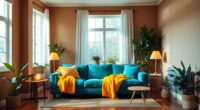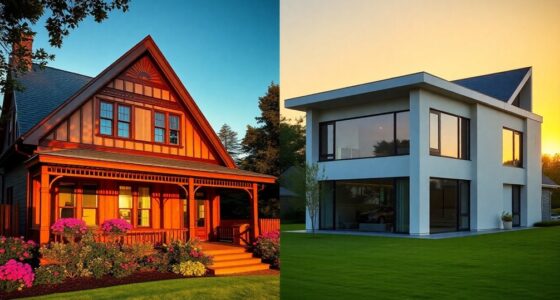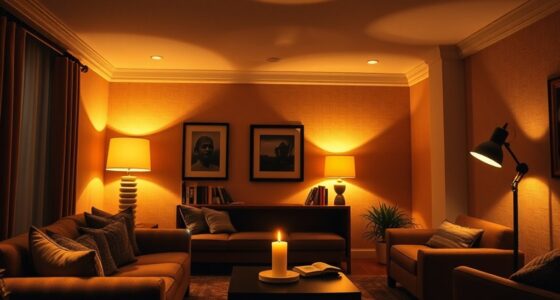You might not realize how much a few clever tricks can change your space. Start by layering design elements with a cohesive color palette—try the 60-30-10 rule for balance. Create emphasis using accent walls or striking contrasts. To optimize your area, embrace multi-functional furniture and maximize vertical storage. Focus on enhancing functionality with efficient lighting and hidden storage solutions. Finally, add personal touches with unique items that reflect your style. Each hack can significantly elevate your interiors, and there's even more to uncover that can truly transform your home.
Key Takeaways
- Use the 60-30-10 color rule to create a harmonious and balanced color scheme in any room.
- Incorporate multi-functional furniture to maximize space and enhance the usability of your living areas.
- Layer textures and materials for visual interest, combining smooth fabrics with rough elements like wood or jute.
- Create focal points with accent walls or bold decor, utilizing negative space for greater emphasis.
- Personalize your space with unique items and sentimental decor to reflect your style and evoke memories.
Layering Design Elements
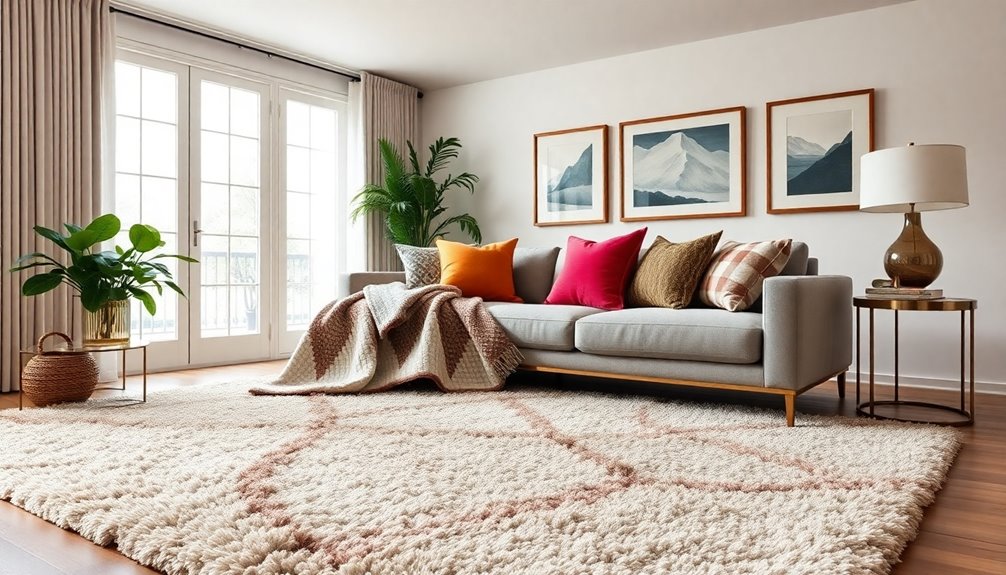
Layering design elements is essential for creating a visually dynamic space. Start by choosing a cohesive color palette; a neutral base on walls and furniture sets a solid foundation. Use the 60-30-10 rule to balance dominant, secondary, and accent colors. Next, mix textures by pairing smooth fabrics like silk with rough materials such as jute. Incorporate natural elements like wood or plants for warmth, as they can add eco-friendly charm to your decor. When adding patterns, begin with solid anchor pieces and gradually introduce varied designs for complexity. Lastly, strategically place your furniture to create focal points and ensure a balanced layout. By incorporating diverse materials into your design, you enhance the overall sensory experience of the space. This approach not only enhances aesthetics but also provides a comfortable and inviting atmosphere.
Creating Emphasis
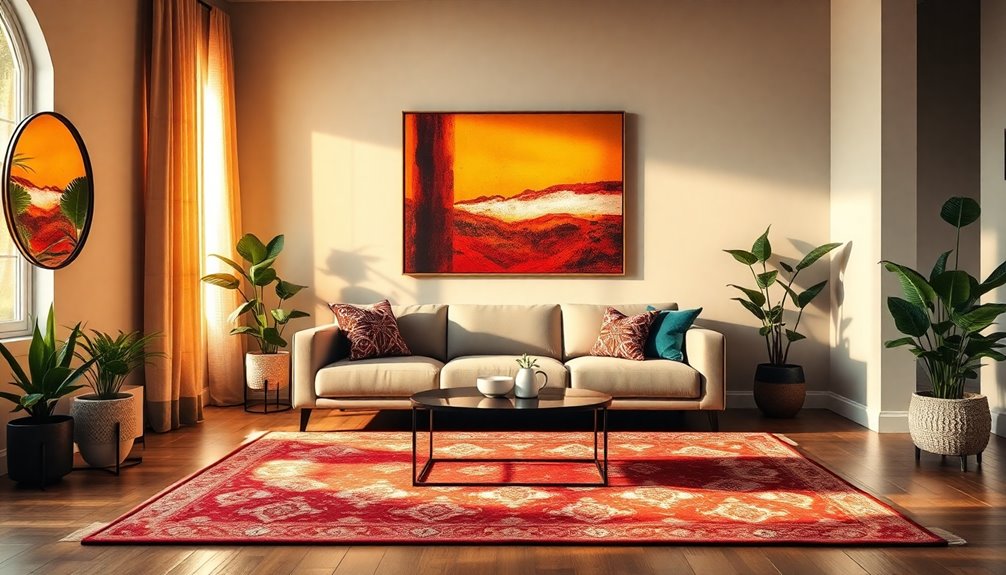
Creating Emphasis
Emphasis is key to drawing attention and creating a focal point in your interior space. You can achieve this through color by painting an accent wall or using bold color blocks to highlight specific areas. Consider introducing complementary colors for striking contrast or a monochromatic scheme with one standout element. Contrast works wonders too; juxtapose textures and materials, or place oversized items, like a chandelier, to captivate the eye. Additionally, incorporating smart home devices can enhance the functionality of your space while maintaining aesthetic appeal. Placement matters as well—centralize your focal point or use negative space to isolate it. Finally, isolate a single element for focus, apply a minimalist approach, and ensure a clear visual hierarchy. Additionally, color psychology can enhance emotional resonance, influencing how people perceive and interact with the space. These strategies will transform your space into a captivating environment that commands attention.
Optimizing Space
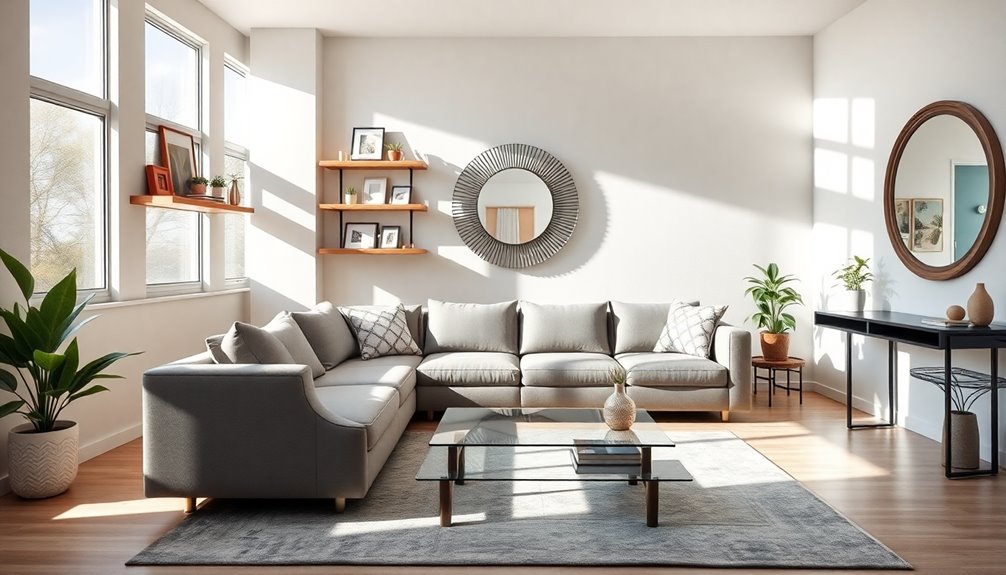
After establishing focal points to capture attention, it's time to think about how to make the most of your available space.
Embrace multi-functional furniture like sofa beds or Murphy beds that seamlessly blend into your decor while providing extra sleeping space. Effective space planning emphasizes the importance of incorporating furniture that serves multiple purposes to enhance usability. Consider that utilizing multi-functional furniture can also simplify your living environment.
Maximize vertical storage with floating shelves and wall-mounted cabinets, keeping your floor clear and airy.
Optimize your furniture arrangement by creating distinct zones and ensuring clear pathways.
Consider space-saving solutions like pullout desks or nesting bookshelves that adapt to your needs.
Enhancing Functionality
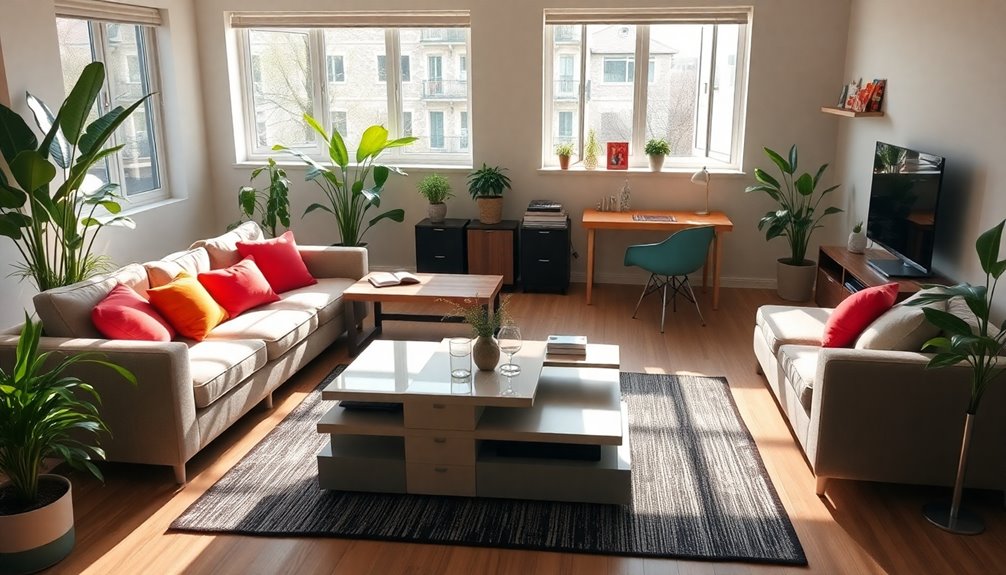
Enhancing functionality in your space can transform how you live and interact with your environment. Consider incorporating multi-purpose furniture like convertible dining tables and foldable desks, which can adapt to your needs. Storage solutions are key; think about built-in shelving and hidden compartments to keep clutter at bay. Efficient lighting, such as wall-mounted fixtures and under-cabinet lights, can illuminate your space without sacrificing surface area. Regularly reassessing your storage options can also help ensure that your space remains organized and efficient. Don't forget versatile decor like mirrors and decorative hooks, which can add style while serving practical purposes. Additionally, utilizing collapsible furniture allows for greater flexibility in adapting your space for different activities.
Adding Personal Touches
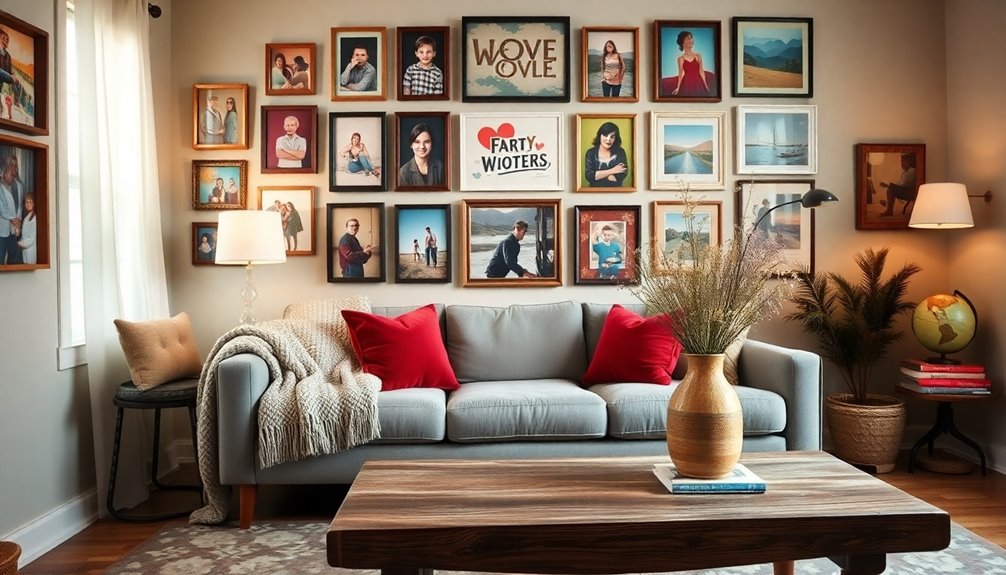
Optimizing functionality in your space creates a solid foundation, but adding personal touches truly transforms it into a home.
Reflect your personality by identifying your style and selecting unique elements that resonate with you, like musical instruments or nature-inspired decor. Incorporate personal objects, such as family mementos or travel souvenirs, to foster emotional connections. Items with personal meaning can foster emotional ties to the home, enhancing your overall experience. Additionally, consider using aesthetic hooks to display these items creatively, enhancing both functionality and decor.
Create a showcase for these items, making them focal points and conversation starters. Use sentimental items, including framed family photos or unique keepsakes, to evoke memories and nostalgia.
Enhance your space further with plants, bold colors, and textures that resonate with your interests.
Balancing Design Elements
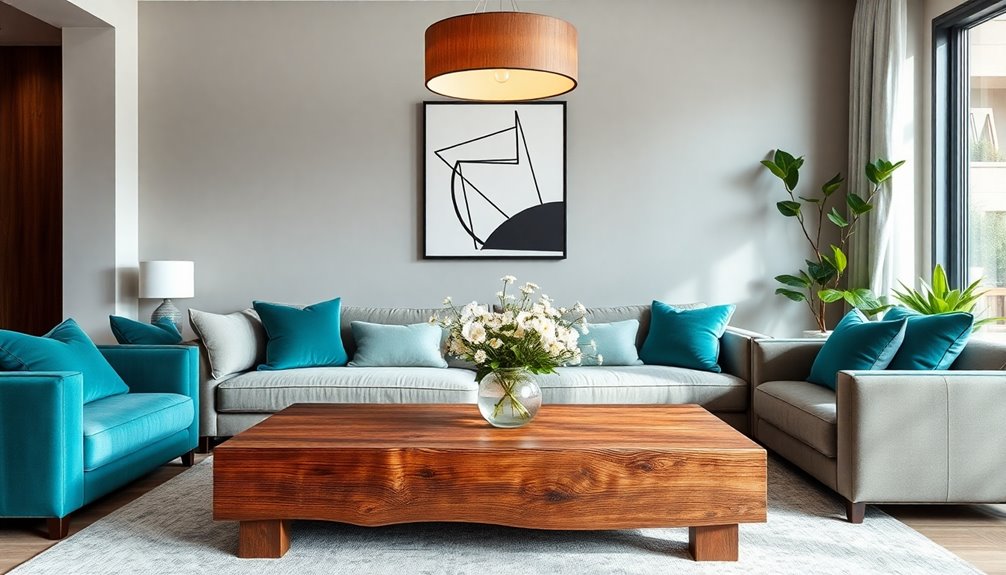
While creating a beautifully designed space, it's essential to balance various elements to achieve harmony and visual appeal.
Balance refers to the artful distribution of visual weight, making your space feel stable and inviting. You can choose from three types: symmetrical, asymmetrical, and radial.
Symmetrical balance mirrors design elements for a sense of order, perfect for traditional styles. Asymmetrical balance uses differing shapes or textures that share visual weight, adding depth and individuality. Radial balance involves arranging objects around a central focal point, creating unity. Incorporating lighting design can significantly influence the perception of balance within the space.
Consider factors like shape, size, and color to distribute visual weight effectively. Utilizing texture and material balance can enhance the overall aesthetic by combining soft and hard elements, further contributing to a sensation of comfort and richness. With these strategies, you'll craft a space that feels both comfortable and aesthetically pleasing.
Frequently Asked Questions
How Do I Choose the Right Color Palette for My Space?
To choose the right color palette for your space, start by understanding color theory basics. Use a color wheel to explore primary, secondary, and complementary colors.
Consider the 60-30-10 rule for balancing colors—60% dominant, 30% secondary, and 10% accent. Think about the emotional response you want to evoke and how lighting affects colors.
Experiment with color blocking or triadic combinations for a fresh feel, making sure it reflects your style and mood.
What Are the Latest Interior Design Trends to Consider?
When it comes to interior design trends, you're in for a treat. Bold colors are taking center stage, with red and electric brights poised to energize your space.
Sustainability is key, so look for natural materials and recycled products. Comfort's not forgotten either, as multifunctional furniture blends style with cozy vibes.
Finally, don't shy away from innovative design elements, like textured walls and integrated outdoor living, to truly elevate your home.
How Can I Make a Small Room Feel Larger?
To make a small room feel larger, you can use mirrors to reflect light and create depth.
Opt for vertical lines in your decor, like tall shelves, to draw the eye upward. Keep your color palette light and consider color blocking to add height.
Use multi-functional furniture to maximize space and minimize clutter.
Finally, incorporate smart storage solutions to keep surfaces clear, allowing for a more open and airy feel.
What Are the Best Materials for Sustainable Interior Design?
Imagine stepping into a space that breathes harmony with nature.
For sustainable interior design, consider using materials like bamboo and cork, which are renewable and durable.
Jute and organic cotton add warmth and versatility while keeping environmental impact low.
Recycled glass and reclaimed wood not only enhance aesthetics but also tell a story of sustainability.
How Do I Mix Different Design Styles Effectively?
To mix different design styles effectively, start by finding common ground through shared colors, textures, or materials.
Create a strong focal point with a statement piece that anchors the space.
Balance proportions by ensuring furniture sizes complement each other and allow for movement.
Embrace contrasts intentionally, combining sleek modern items with rustic vintage pieces, and mix patterns and materials thoughtfully to reflect your unique taste while maintaining visual harmony.
Conclusion
So there you have it—these mind-blowing interior design hacks that'll transform your space into a Pinterest-worthy paradise. But hey, who needs a perfectly balanced room or optimized space when you can embrace chaos? After all, nothing screams "lived-in charm" like tripping over a stack of mismatched furniture! Just remember, while you're layering those elements and adding your personal touches, a little irony goes a long way in making your home truly, uniquely you.
